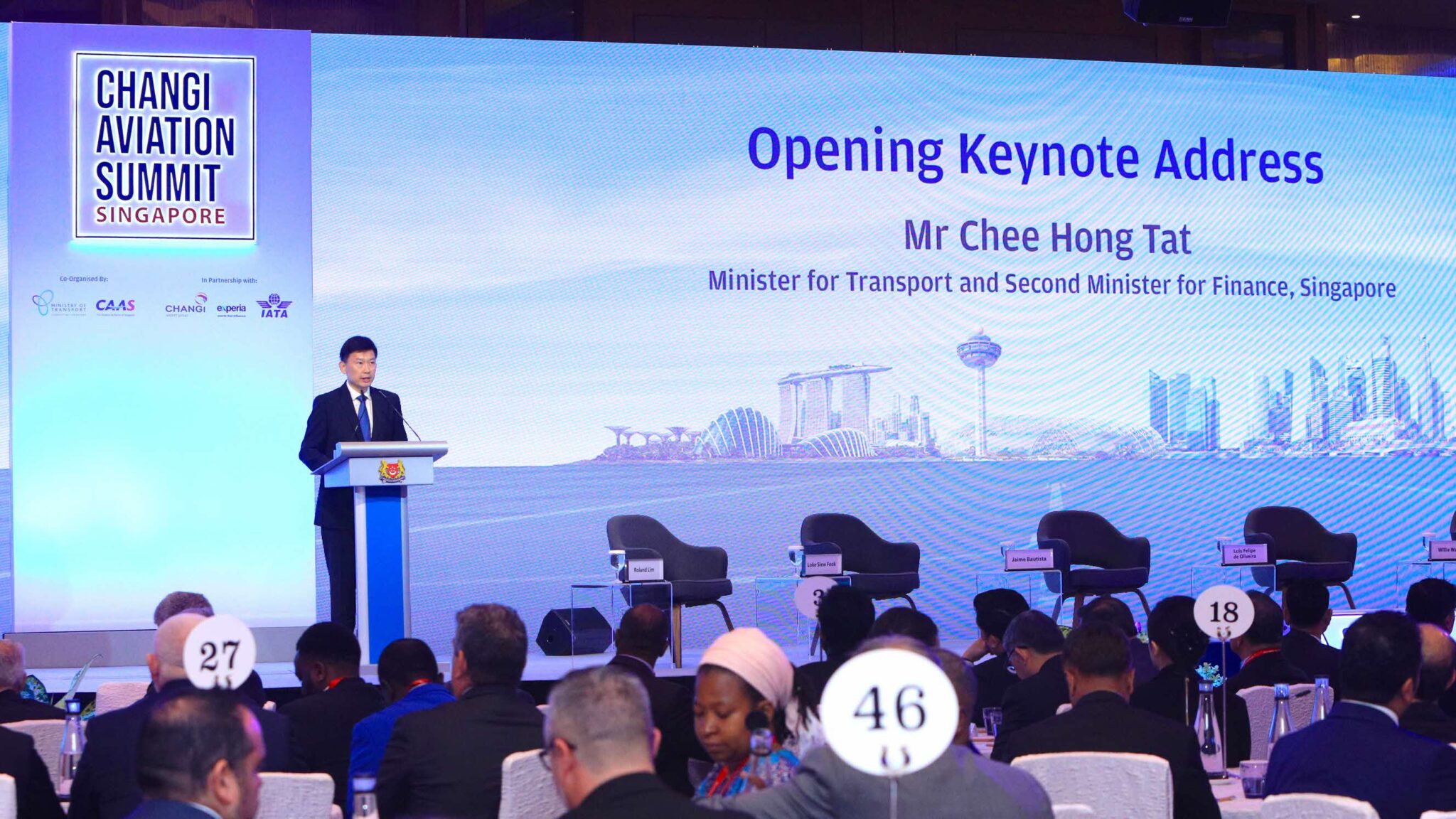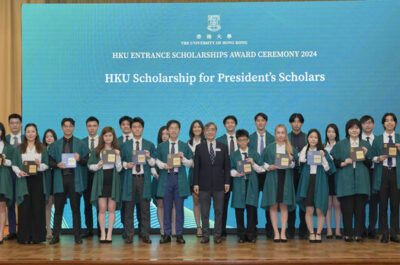
Singapore’s new Sustainable Air Hub Blueprint sets ambitious targets for aviation decarbonization, emphasizing sustainable growth and competitiveness.
The Singapore Sustainable Air Hub Blueprint was launched by Mr Chee Hong Tat, Minister for Transport and Second Minister for Finance, at the Changi Aviation Summit. The Blueprint, which was developed by the Civil Aviation Authority of Singapore (CAAS) in consultation with industry and other stakeholders, sets out Singapore’s action plan for the decarbonization of its aviation sector. It will be submitted to the International Civil Aviation Organization (ICAO) as Singapore’s State Action Plan this month.
The Blueprint adopts a balanced approach to the long-term, sustainable growth of Singapore’s aviation sector, taking into account the need for environmental sustainability while ensuring that the Singapore air hub remains competitive. It sets out Singapore’s medium-term and long-term targets, as well as concrete steps that CAAS and the aviation stakeholders will take to decarbonize Singapore aviation.
Under the Blueprint, CAAS will work with aviation stakeholders to reduce domestic aviation emissions from airport operations1 by 20% from 2019 levels (404ktCO2e) in 2030 and achieve net zero domestic and international aviation emissions2 by 2050. To achieve these goals, 12 initiatives across the airport, airline and air traffic management (ATM) domains will be rolled out to decarbonize the Singapore aviation sector. CAAS will also put in place five enablers to create the conditions for the effective implementation of these initiatives.
Airport domain – maximal efforts to reduce energy use and deploy renewables
CAAS will advance five initiatives to reduce energy use and deploy renewables at the airport. Of note, CAAS will work with Changi Airport Group to increase solar power deployment at Changi and Seletar Airports. CAAS will also work with the Changi Airport community to expand the use of cleaner energy for airside vehicles. In 2024, CAAS will work with stakeholders to commence a trial on the use of renewable diesel for airside vehicles, particularly heavy and specialized vehicles, to better understand the feasibility, cost, and operational impact of using renewable diesel as a cleaner energy source for airside vehicles. The other initiatives include improving building energy efficiency, leveraging low-carbon electricity imports, and exploring the feasibility of an on-site waste-to-energy facility for resource circularity.
Airline domain – build an ecosystem to support the use of Sustainable Aviation Fuel (SAF) in Singapore
CAAS will undertake four initiatives to build a SAF ecosystem to support the use of SAF in Singapore and to progressively decarbonize airline operations.
Of note, the use of SAF will be required for flights departing Singapore from 2026, and a SAF levy will be introduced for the purchase of SAF. The use of SAF is a critical pathway for the decarbonization of aviation and is expected to contribute around 65% of the carbon emission reduction needed to achieve net zero by 2050.
To kickstart SAF adoption in Singapore, flights departing Singapore will be required to use SAF from 2026. We will aim for a 1% SAF target for a start, to encourage investment in SAF production and develop an ecosystem for more resilient and affordable supply. Our goal is to raise the SAF target beyond 1% in 2026 to 3 – 5% by 2030, subject to global developments and the wider availability and adoption of SAF.
CAAS will introduce a SAF levy for the purchase of SAF to achieve the uplift target. As the market for the supply of SAF is still nascent and the price of SAF can be volatile, we will adopt a fixed cost envelope approach to provide cost certainty to airlines and travellers. The levy will be set at a fixed quantum, based on the SAF target and projected SAF price at that point in time. For example, the quantum of the SAF levy in 2026 will be set based on the volume of SAF needed to achieve a 1% SAF target and the projected SAF price in 2026. The amount collected through the SAF levy will be used to purchase SAF, based on the actual price of SAF at the time of purchase. The SAF levy will not change, even if the actual SAF price differs from what is projected. Instead, the actual uplift volume of SAF will be adjusted based on the pre-determined SAF levy and prevailing SAF price.
The levy will vary based on factors such as distance travelled and class of travel. As an indication, we estimate that the levy to support a 1% SAF uplift in 2026 could increase ticket price for an economy class passenger on a direct flight from Singapore to Bangkok, Tokyo and London by around S$3, S$6 and S$16 respectively. Passengers in premium classes will pay higher levies.
CAAS will continue its close consultation with stakeholders on the implementation of the SAF levy, before announcing more details in 2025 nearer the date of implementation. Please refer to Annex 2 for a factsheet on SAF.
Other initiatives under the airline domain include the centralized procurement of SAF for the Singapore air hub, anchoring SAF production in Singapore and the region, and investing in airline fleet renewal and operational improvements.
ATM domain – operational improvements to increase efficiency and reduce fuel burn
CAAS will undertake three initiatives to improve ATM operations to increase efficiency and reduce fuel burn over the next five years. This includes advanced demand-capacity balancing implementation, performance-based navigation enhancements, and gate-to-gate trajectory optimization. Collectively, these initiatives are expected to bring about a 10% reduction in additional fuel burn and emissions, offering a win-win solution for the environment, airlines and passengers.
To enable these ATM initiatives, CAAS is collaborating with local and international stakeholders, such as airlines, other air navigation service providers, the recently established International Centre for Aviation Innovation (ICAI), as well as our local research institutes and institutes of higher learning, to develop and trial the solutions.
Five enablers to support effective implementation
CAAS will also put in place five enablers to create the conditions for the effective implementation of these decarbonization initiatives. They include policy and regulation, industry development, infrastructure planning and provision, workforce transformation, and international partnerships and collaborations. Of note, CAAS has rolled out a S$50 million Aviation Sustainability Programme to support sustainable aviation projects, will build up sustainability capabilities in our workforce, and establish the Asia-Pacific sustainable aviation centre.
The Sustainable Air Hub Blueprint has incorporated and built upon the recommendations by the International Advisory Panel (IAP) on Sustainable Air Hub, which were published in September 2022. The IAP, formed in February 2022, brought together 20 industry, technology, and knowledge partners from Singapore and around the world. The IAP was chaired by Professor Chong Tow Chong, President of the Singapore University of Technology and Design. Members of the IAP include Directors-General from key aviation International Organisations, as well as C-suite executives from major aviation industry and renowned knowledge and technology partners. Following the submission of the IAP recommendations, CAAS and stakeholders held extensive consultations and detailed studies before finalizing the targets and initiatives of the Blueprint.
Mr Chee Hong Tat, Minister for Transport and Second Minister for Finance, said, “Singapore’s approach is to enable the aviation sector to achieve both growth and environmental sustainability, so that future generations can continue to enjoy the benefits of flying. The Singapore Sustainable Air Hub Blueprint demonstrates this balanced approach. The measures were developed after careful study and close consultation with domestic and international stakeholders, and we hope that they will help to catalyze the development of sustainable aviation in the region and around the world.”
George, in his capacity as an intern, diligently oversees the flow of news, assists in the publication of content, and delves into the strategies of social media distribution. He is currently pursuing his studies in Business Administration at the Athens University of Economics and Business.




![[PR] PR_Ascott and Vimut Hospital_2024](https://www.traveldailynews.asia/wp-content/uploads/2024/04/PR-PR_Ascott-and-Vimut-Hospital_2024-400x265.jpg)




























































